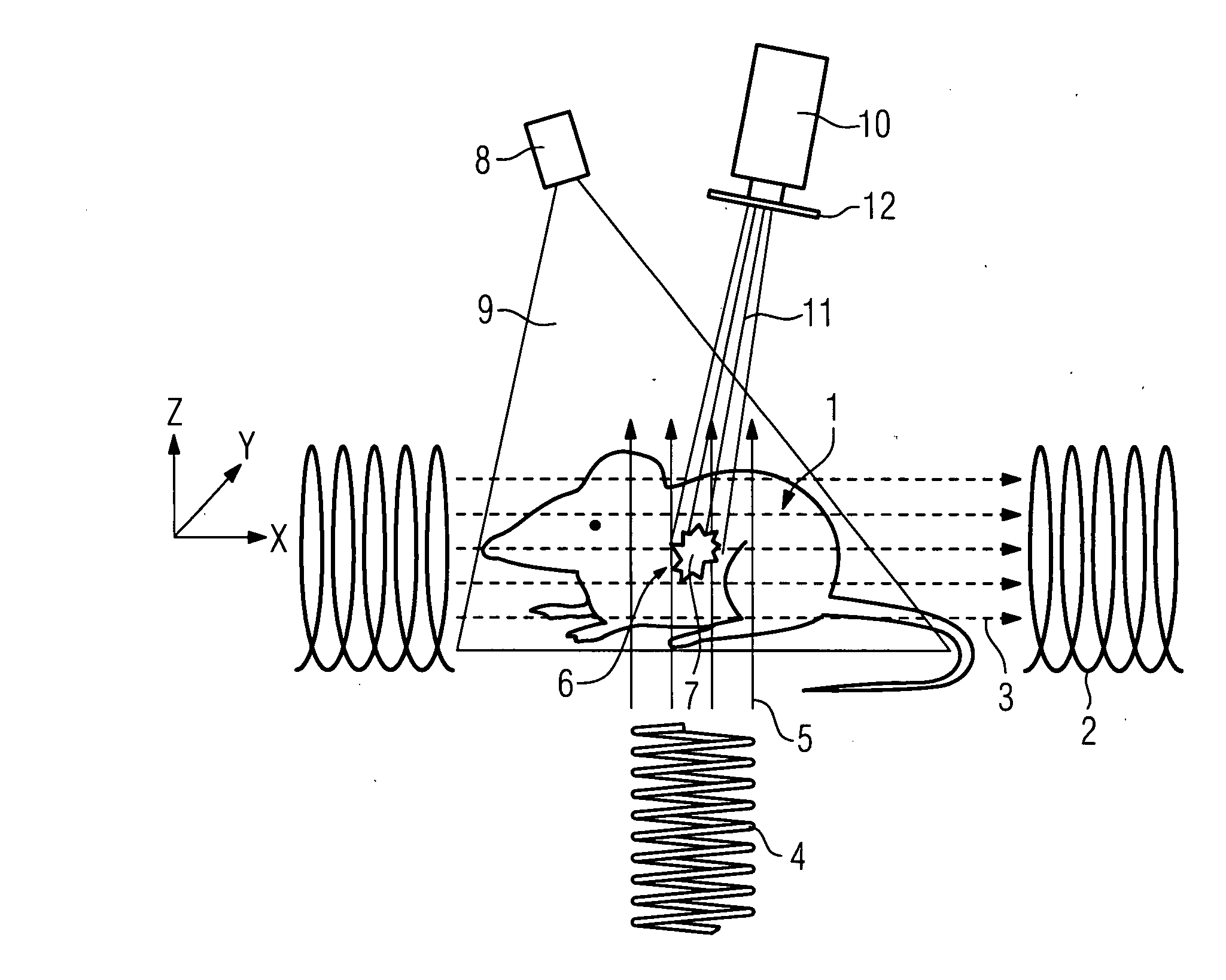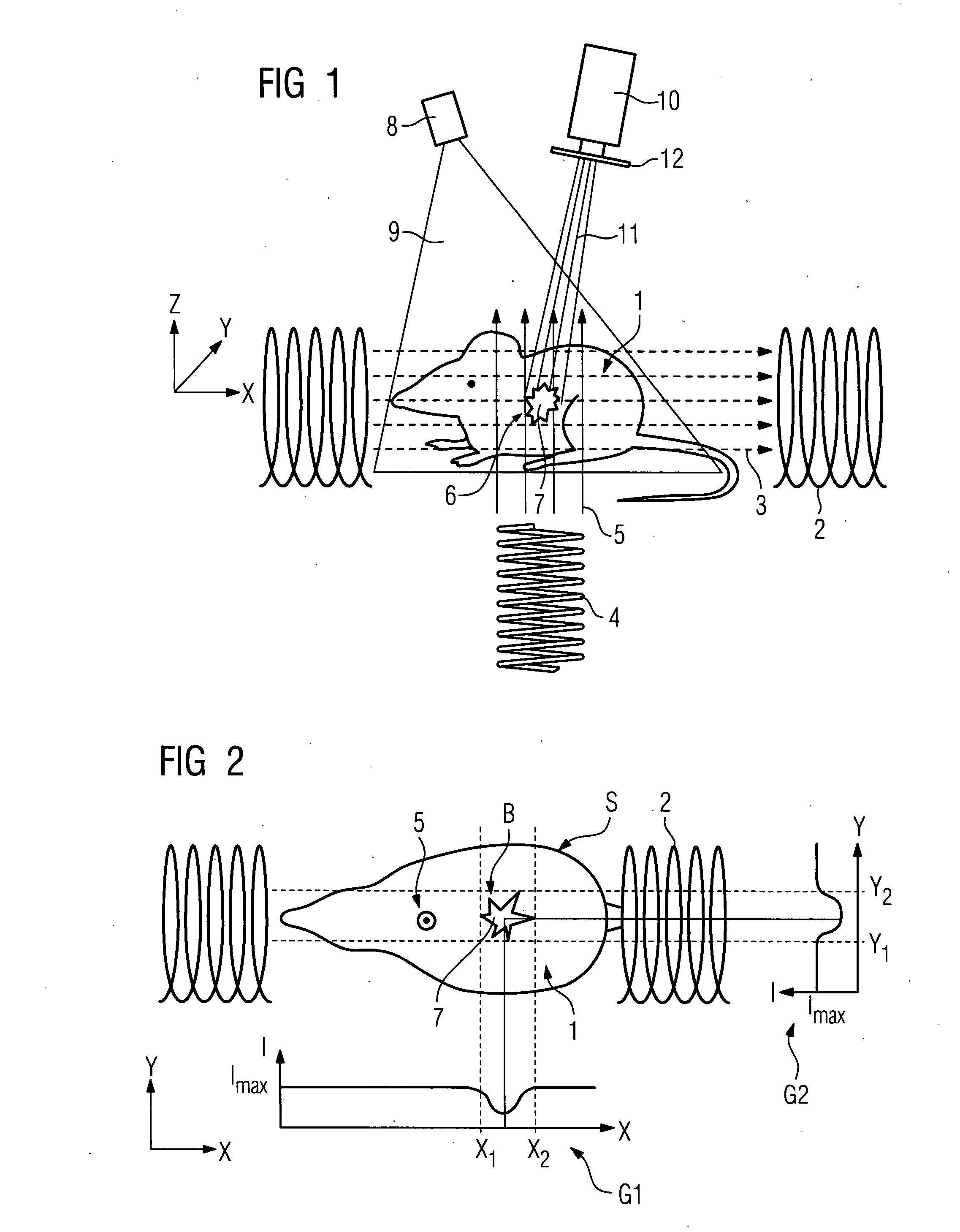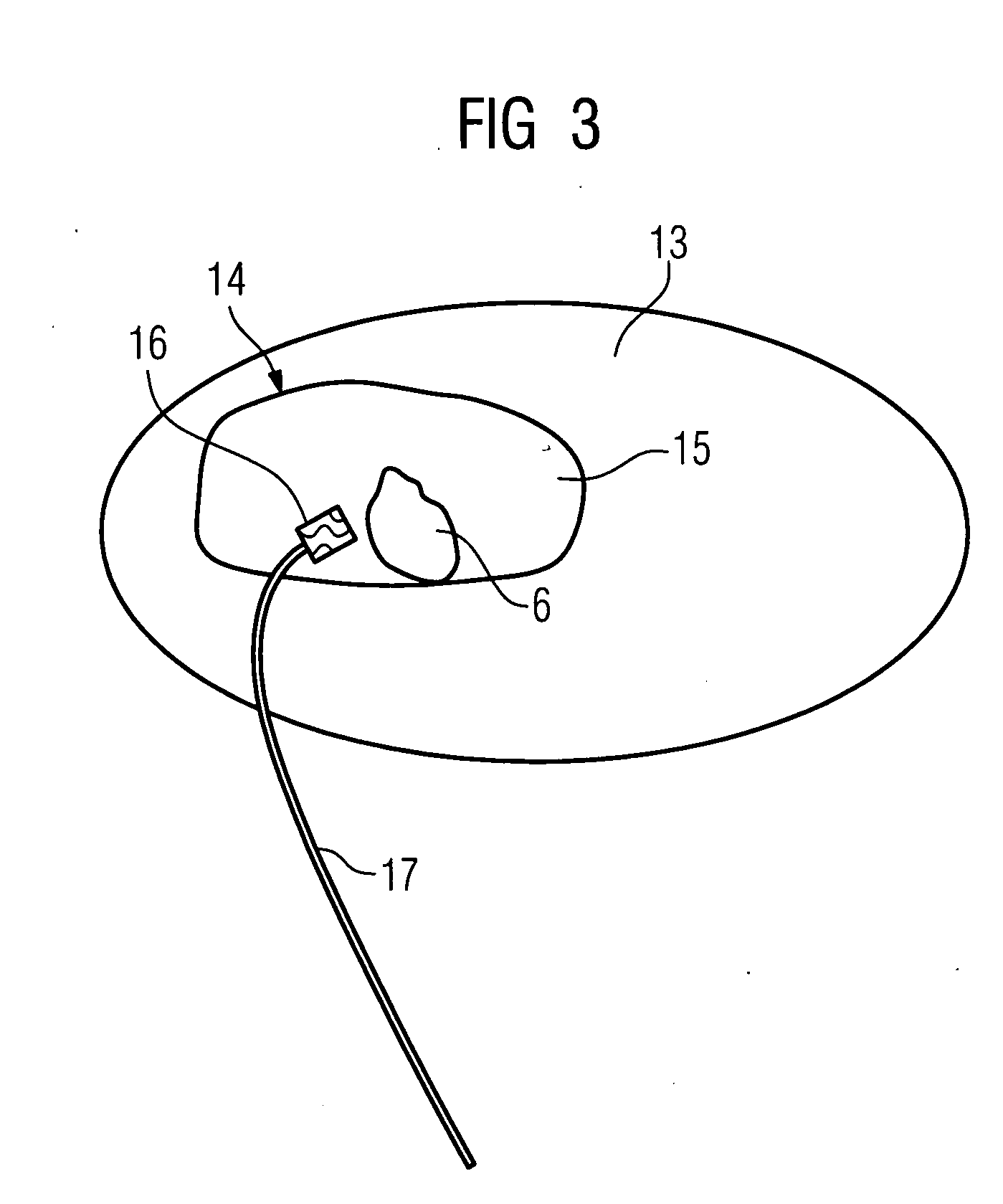Method and device for examining a biological tissue
a biological tissue and method technology, applied in the field of biological tissue methods and devices, can solve the problems of insufficient precision in detecting fluorescent light from deep tissue layers, tumors or lesions located deep in the tissue cannot be detected safely and reliably, and the local resolution of the method can be further improved, and the local resolution can be simplified.
- Summary
- Abstract
- Description
- Claims
- Application Information
AI Technical Summary
Benefits of technology
Problems solved by technology
Method used
Image
Examples
Embodiment Construction
[0035]A magnetic field 3 is generated in a tissue 1 of a mouse, using two first magnetic coils 2, for example. A second magnetic coil 4 is used to generate a magnetic alternating field 5 essentially perpendicular to the magnetic field 3. A luminescent substance 7 is accumulated in a tumor 6 located in the tissue 1. An excitation light emanating from a light source 8 to excite the luminescent substance 7 is denoted by the reference sign 9. The reference sign 10 denotes a CCD camera for detecting a luminescent light 11 emanating from the luminescent substance 7. A filter 12 is connected upstream of the CCD camera. X, Y and Z are used to denote an X, Y and Z direction. X1 and X2 and Y1 and Y2 denote first and second X and Y co-ordinates respectively.
[0036]The method is implemented as follows:
[0037]In a first step, a permutation symmetry imbalance is generated in the tissue 1 of the mouse using the magnetic field 3 generated using the first magnetic coils 2. The permutation symmetry imb...
PUM
 Login to View More
Login to View More Abstract
Description
Claims
Application Information
 Login to View More
Login to View More - R&D
- Intellectual Property
- Life Sciences
- Materials
- Tech Scout
- Unparalleled Data Quality
- Higher Quality Content
- 60% Fewer Hallucinations
Browse by: Latest US Patents, China's latest patents, Technical Efficacy Thesaurus, Application Domain, Technology Topic, Popular Technical Reports.
© 2025 PatSnap. All rights reserved.Legal|Privacy policy|Modern Slavery Act Transparency Statement|Sitemap|About US| Contact US: help@patsnap.com



